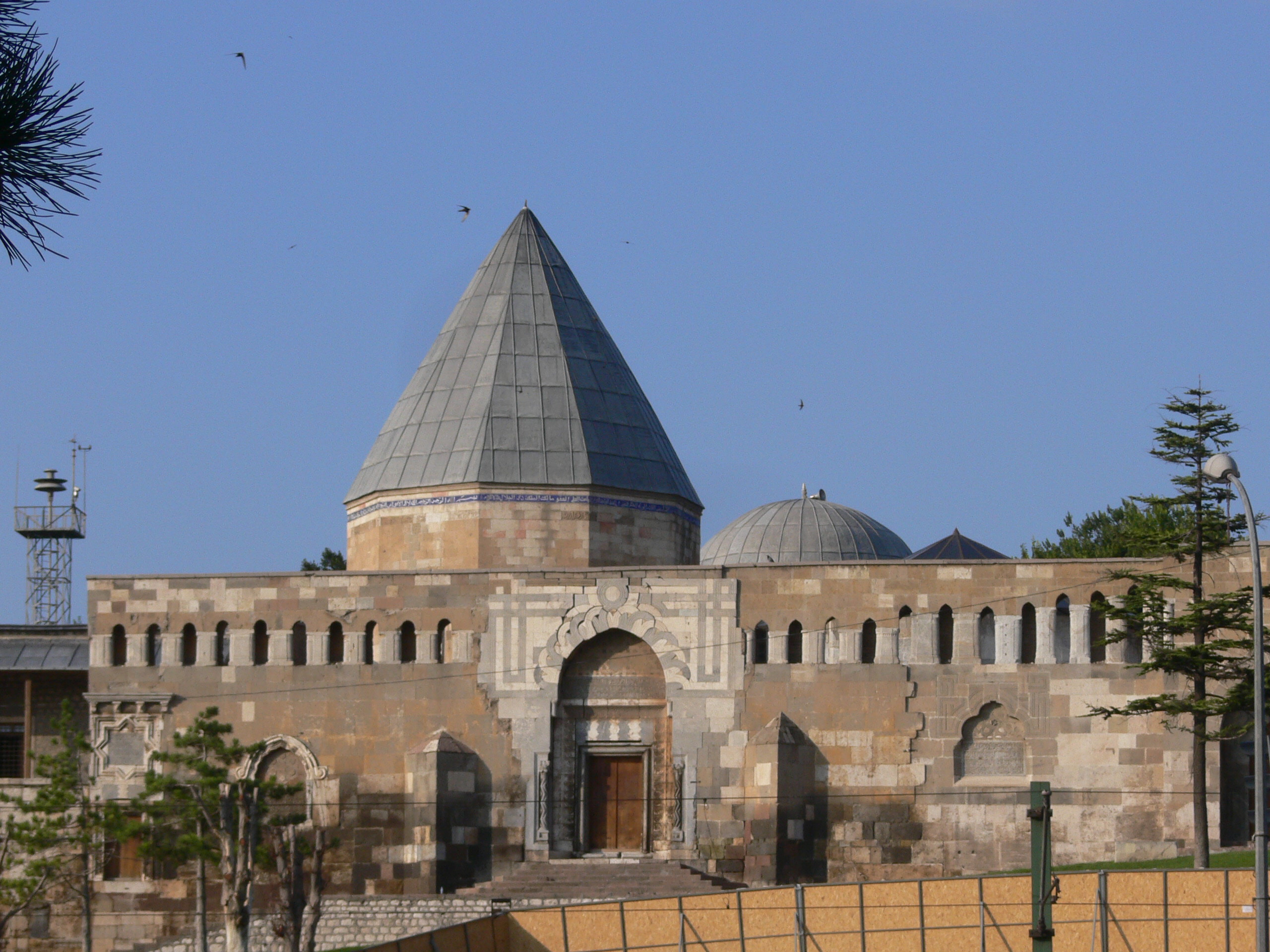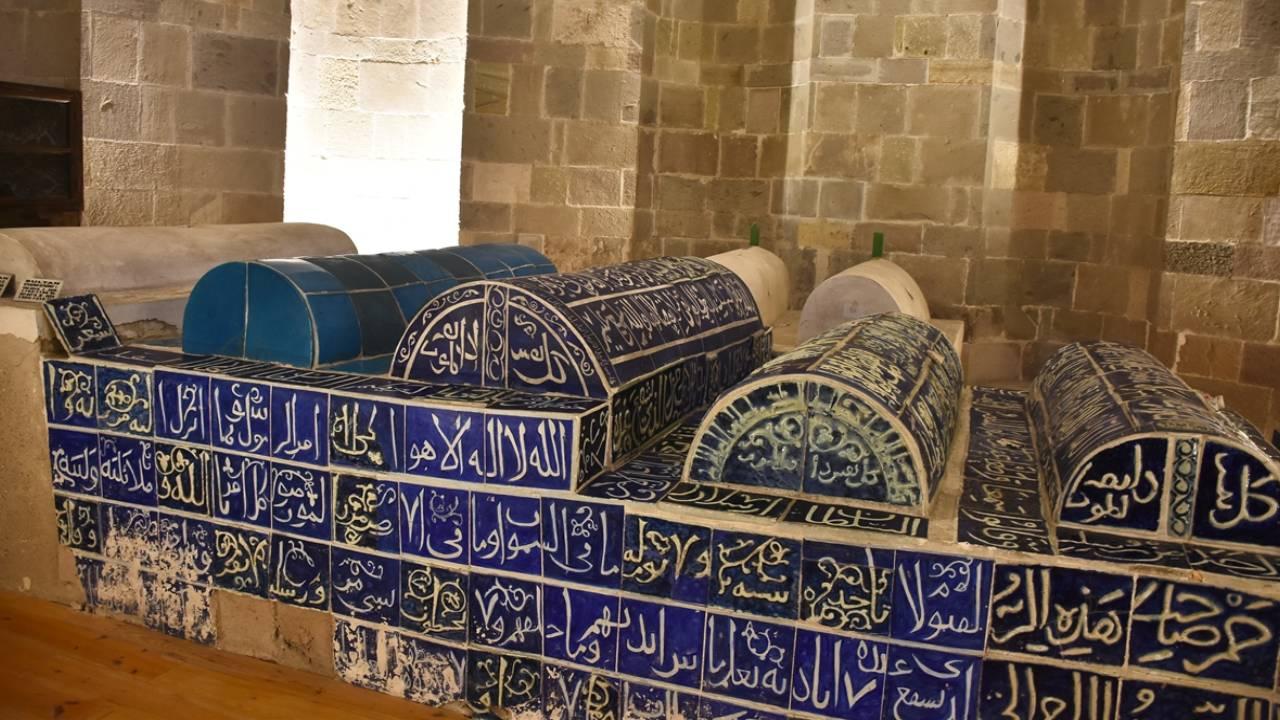If you're looking for an oasis in the vibrant, bustling center of Konya where you can both delve into the depths of history and take a moment to breathe, you've come to the right place. Alaeddin Hill, standing like a green island defying time right in the heart of the city, promises you much more than that. Although a local legend suggests it was built by carrying soil under the order of Sultan Alaeddin Keykubad I , the reality is far more fascinating. This is a 20-meter-high natural mound, a time capsule, where the first settlements date back approximately 5,000 years to the Early Bronze Age. So, what are the things to do on Alaeddin Hill, this green mound in the middle of Konya?
This hill is not just a place with historical structures; it is the very essence of Konya, the nucleus from which the city was born. This piece of land, which the Phrygians called Kawania , the Romans knew as Iconium, and which eventually served as the capital of the Anatolian Seljuk State, has witnessed the city's entire development. So when you step onto this hill, you are not just entering a park; you are touching the thousand-year-old soul of Konya. Let's embark on an unforgettable journey through the layers of this unique hill.
Explore the historic Alaeddin Mosque at the top of the hill in the city center

As you walk towards the summit of the hill, the first thing to greet you will be the Alaeddin Mosque, reflecting the power and elegance of the Seljuk State with its grandeur. This structure is not a monument built in a single day but a living architectural document spanning a century.
One Mosque, Four Sultans: A Masterpiece That Defies Time
The story of the Alaeddin Mosque bears the signatures of four great Seljuk sultans. Construction began during the reign of Sultan Mesud I (1116-1156). One of the most precious treasures inside the mosque, the magnificent minbar (pulpit) made of ebony wood using the kündekâri technique without a single nail, dates back to this early period, from the year 1155. This masterpiece was crafted by the hands of Mengü Berti of Ahlat.
His son, Kilij Arslan II (1156-1192), who took over after Sultan Mesud I, not only expanded the mosque but also added the famous tomb in its courtyard, which would become the dynasty's eternal resting place. The final and most magnificent touches were made by Izzeddin Keykavus I and his brother, the great ruler Alaeddin Keykubad I (1220-1237). The mosque was completed in 1221 during the time of Alaeddin Keykubad, from whom it gets its current name, through the skill of the architect Muhammad bin Havlan of Damascus.
Stories Whispered by the Walls: Spolia and Architectural Irregularity
When you step inside the mosque, one of the first things you'll notice might be the charming irregularity in its plan. This is not a flaw but, on the contrary, the mosque's most characteristic feature. The structure had to adapt to the uneven terrain of a thousand-year-old mound, growing with additions made in different periods.
When you look up at the columns, you will witness another secret. Almost none of the more than forty marble columns are alike. This is because these columns are spolia—repurposed materials brought from ancient Roman and Byzantine structures in and around Konya. This was not just an example of pragmatism but also a powerful political message. By incorporating the architectural heritage of the lands they conquered into their capital's grandest mosque, the Seljuks were declaring, We are the new and eternal owners of these lands, and their history belongs to us.
The Pinnacles of Seljuk Art: The Minbar and Mihrab
There are two artistic marvels inside the mosque that you should take special time to appreciate. The first is the aforementioned ebony minbar from 1155. This work, made of interlocking wooden pieces, is the pinnacle of Seljuk woodcarving. The second is the mihrab (prayer niche) decorated with tile mosaics. Although some of the original tiles have fallen off, the remaining pieces still display the famous colors of Seljuk art—eggplant purple, turquoise, and black. These works are living proof of how refined was.
Visit the tombs of the Seljuk sultans inside the mosque

When you step into the courtyard of the Alaeddin Mosque, you will find yourself in the presence of a great dynasty that made Anatolia a Turkish homeland. This is a kind of Seljuk Pantheon that will take you to the most majestic pages of history.
The Eternal Resting Place of a Dynasty
The decagonal (ten-sided) tomb, or kümbet, that dominates the courtyard was built by Sultan Kilij Arslan II. Inside this mausoleum are the sarcophagi of eight sultans who ruled the Anatolian Seljuk State. Every step you take here is an expression of respect for the silent legacy of an empire.
The Sultans in the Tomb and the Veil of History
As you wander among the sarcophagi, it is a profound feeling to know that figures such as Sultan Mesud I, Kilij Arslan II, Giyaseddin Keyhüsrev I, and Alaeddin Keykubad I, who led the state through its most brilliant period, are in their eternal sleep here. However, there is also a veil of mystery. Over the centuries, the knowledge of which sarcophagus belongs to whom has become somewhat confused. Fortunately, this historical puzzle is slowly being solved through recent scientific studies, such as identifying the bones of Kilij Arslan II, who was known to be hunchbacked.
The table below may help you better understand this complex but fascinating history:
| Role | Sultan / Master Craftsman | Reign/Period | Key Contribution |
|---|---|---|---|
| Builder | Sultan Rükneddin Mesud I | 1116-1156 | Initiated mosque construction. |
| Builder | Sultan Kilij Arslan II | 1156-1192 | Continued work, built the dynastic tomb. |
| Builder | Sultan Alaeddin Keykubad I | 1220-1237 | Completed the mosque. |
| Minbar Craftsman | Mengü Berti of Ahlat | 1155 | Crafted the ebony minber. |
| Architect | Muhammed bin Havlan al-Dimishqi | ~1220 | Led the final expansion. |
| Buried in Tomb | Sultan Mesud I | D. 1156 | Seljuk Sultan |
| Buried in Tomb | Sultan Kilij Arslan II | D. 1192 | Seljuk Sultan |
| Buried in Tomb | Sultan Giyaseddin Keyhüsrev I | D. 1211 | Seljuk Sultan |
| Buried in Tomb | Sultan Alaeddin Keykubad I | D. 1237 | Seljuk Sultan |
| Buried in Tomb | and four other Seljuk Sultans | - | Other dynasty members |
An Unfinished Story: The Mysterious Second Tomb
Right next to the large tomb, you will see another structure, octagonal in plan and more ornate. However, this tomb was never completed. Its inscription is blank, its roof is missing... For whom was it being built? Perhaps it was for Sultan Izzeddin Keykavus I, who died at a young age. Why it was left unfinished remains one of history's sweet secrets. This incompleteness adds a unique sense of romance and melancholy to the hill.
Sit in one of the tea gardens on the hill and watch the city

After this intense journey into the depths of history, you deserve a little rest. One of the most beautiful modern experiences Alaeddin Hill offers is exactly this: taking a break against the backdrop of history.
A Break Against History
Sit down in one of the tea gardens scattered around the hill and order yourself a glass of strong, crimson Turkish tea. This is not just a tourist activity; it is a part of the daily life and social ritual of the people of Konya. Surrounded by chatting families, studying youths, and elders enjoying life, you will feel the pulse of the city in its most authentic form. On Alaeddin Hill, the sacred and the secular, the historical and the modern, are intertwined. On one side, a mosque where people pray; on the other, a tea garden filled with laughter... This hill is the most beautiful summary of Konya's living social fabric.
Konya at Your Feet
Watching Konya from your seat is a pleasure in itself. Although the hill is not very high, it offers a wonderful perspective as it is the only elevation in the city center. The tram line winding below like a snake represents the modern face of the city, while the historical buildings within your line of sight remind you of where you are. As you sit here sipping your tea, you can plan your tour accompanied by a unique view of Konya. Connecting everything you see with the historical stories you've just learned will add a whole new meaning to your visit.
Conclusion: While You're Here...
Alaeddin Hill offers a one-of-a-kind experience, from the whispers of Seljuk sultans to the tranquility of a cup of tea. This should not be just a stop on your Konya tour, but the starting point. After recharging your energy, how about descending from the hill to discover other wonders within walking distance? You can choose the tour you want from our Konya Tours page and discover Konya's magnificent history and culture.
Mevlana Museum and Tomb: The spiritual heart of Konya, a pleasant walk down from the hill.Visit our page to get more information about Mevlana Museum.
Karatay Madrasa (Tile Works Museum): If you were impressed by the tilework in the Alaeddin Mosque, you will be amazed by this museum.
İnce Minareli Madrasa (Stone and Wood Works Museum): A must-see for the most elegant examples of Seljuk stonework.
Historic Bedesten Bazaar: An ideal address to see the city's vibrant commercial life and perhaps buy a few souvenirs.
Source: For more detailed academic information about the Alaeddin Mosque, you can visit the Republic of Turkey Ministry of Culture and Tourism's (in Turkish).(https://www.kulturportali.gov.tr/portal/aleddin-camisi)
Frequently Asked Questions (FAQ)
1. Is there an entrance fee for Alaeddin Hill and Alaeddin Mosque? No. Alaeddin Hill is a public park area, and entry is free. As Alaeddin Mosque is an active place of worship, there is no fee for visiting.
2. Which Seljuk sultans are buried in the tomb at Alaeddin Mosque? The tomb contains the sarcophagi of eight Anatolian Seljuk Sultans, including Mesud I, Kilij Arslan II, Giyaseddin Keyhüsrev I, and Alaeddin Keykubad I.
3. Is Alaeddin Hill a natural hill, or was it man-made? Contrary to popular legend, Alaeddin Hill is not an artificial mound created by piling up earth. It is a natural mound (a settlement hill) thousands of years old, where the first settlements date back to 3000 BC, the Early Bronze Age.


 English
English Türkçe
Türkçe